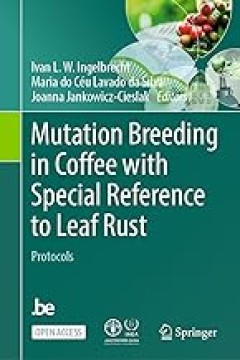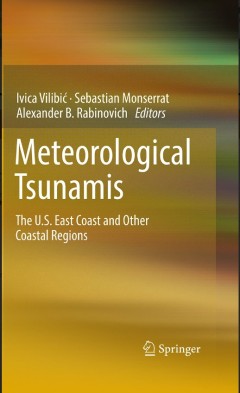Filter by

Organisiertes Misstrauen und ausdifferenzierte Kontrolle
Martin Weißmann legt in diesem Open-Access-Buch theoretische Synthesen zu zentralen Themen der interdisziplinären Polizeiforschung vor und leistet damit einen Beitrag zur Integration dieser ansonsten oft empiristischen Forschung in die stärker theorieorientierte Soziologie. Er schlägt vor, (Kriminal-)Polizeien als Fall misstrauischer Sozialsysteme zu analysieren. Wie beispielsweise auch Geh…
- Edition
- 1
- ISBN/ISSN
- 978-3-658-39227-7
- Collation
- -
- Series Title
- Organisationssoziologie
- Call Number
- XI, 436

Social Science Research in the Arab World and Beyond
This book presents and discusses the logic and method of social science research adapted mainly for instruction at Arab universities and for research in Arab countries, but with applicability beyond the region. It illustrates major concepts and methods pertaining to research with examples of previous studies carried out in the Arab world and with exercises using Arab Barometer and other dataset…
- Edition
- 1
- ISBN/ISSN
- 978-3-031-13838-6
- Collation
- -
- Series Title
- SpringerBriefs in Sociology
- Call Number
- XXII, 160

Gemeinsam Musizieren
Wenn Menschen miteinander musizieren, koordinieren und synchronisieren sie ihre Handlungen so präzise, dass sie ein hörbares Kollektivgebilde konstruieren: Gemeinsame Musik. Das ist eine herausragende Leistung, die ein Grundinteresse adressiert, das nicht nur die Musiksoziologie, sondern die Soziologie und Sozialtheorie gleichermaßen betrifft: Wie gelingt es Handelnden, gemeinsam Soziales zu…
- Edition
- -
- ISBN/ISSN
- 978-3-658-42161-8
- Collation
- XXVI, 517
- Series Title
- -
- Call Number
- -

Wheat Evolution and Domestication
This open access book covers a century of research on wheat genetics and evolution, starting with the discovery in 1918 of the accurate number of chromosomes in wheat. We re-evaluate classical studies that are pillars of the current knowledge considering recent genomic data in the wheat group comprising 31 species from the genera Amblyopyrum, Aegilops, Triticum, and other more distant relatives…
- Edition
- -
- ISBN/ISSN
- 978-3-031-30174-2
- Collation
- XXIII, 673
- Series Title
- -
- Call Number
- -

Mutation Breeding in Coffee with Special Reference to Leaf Rust
This open-access book provides a comprehensive overview of current methodologies for improving resistance to leaf rust in coffee, one of the world's most important cash crops and beverages. Coffea arabica L. (Arabica) accounts for about 60% of the world's coffee production. Coffee leaf rust (CLR), caused by the fungus Hemileia vastatrix is the major disease affecting Arabica coffee resulting in…
- Edition
- -
- ISBN/ISSN
- 978-3-662-67272-3
- Collation
- XX, 314
- Series Title
- -
- Call Number
- -

Professionelle Unterrichtswahrnehmung im sozialwissenschaftlichen Fachunterricht
Dieses Open-Access-Buch bietet theoretische Grundlagen und praktische Beispiele zur Förderung der professionellen Unterrichtswahrnehmung von (angehenden) Lehrkräften im sozialwissenschaftlichen Fachunterricht. Im Fokus steht das Potential von Animationsfilmen realer Unterrichtsszenen, die mit diesem Band erstmals als innovatives Lehr-/Lernmedium für die Lehrer*innenbildung vorgestellt werden…
- Edition
- -
- ISBN/ISSN
- 978-3-658-41828-1
- Collation
- XVIII, 301
- Series Title
- -
- Call Number
- -

Middlemarch : a study in provincial life Volume 2
- Edition
- -
- ISBN/ISSN
- -
- Collation
- 2 v. : 20 cm
- Series Title
- 2
- Call Number
- 300 ELI m
- Edition
- -
- ISBN/ISSN
- -
- Collation
- 2 v. : 20 cm
- Series Title
- 2
- Call Number
- 300 ELI m

Closing Rice Yield Gaps in Asia
This open access book contributes not only to the scientific literature on sustainable agricultural development and in particular rice agriculture but also is highly valuable to assist practitioners, projects, and policymakers due to its sections on reducing carbon footprint, agricultural innovations, and lessons learned from a multi-country/multi-stages development project. The scope of …
- Edition
- -
- ISBN/ISSN
- 978-3-031-37946-8
- Collation
- XXVII, 259
- Series Title
- -
- Call Number
- -

Meteorological Tsunamis: The U.S. East Coast and Other Coastal Regions
The book encompasses a set of papers on meteorological tsunamis covering various aspects on this rare but potentially destructive multiresonant phenomenon. Altogether an editorial and 15 contributions are part of this book; eight of the contributions deal with different aspects of meteotsunamis along the U.S. East Coast and in the region of the Great Lakes, including one paper introducing a new…
- Edition
- 1
- ISBN/ISSN
- 978-3-319-12711-8
- Collation
- VI, 306
- Series Title
- -
- Call Number
- -

Meteorological Tsunamis: The U.S. East Coast and Other Coastal Regions
The book encompasses a set of papers on meteorological tsunamis covering various aspects on this rare but potentially destructive multiresonant phenomenon. Altogether an editorial and 15 contributions are part of this book; eight of the contributions deal with different aspects of meteotsunamis along the U.S. East Coast and in the region of the Great Lakes, including one paper introducing a new…
- Edition
- 1
- ISBN/ISSN
- 978-3-319-12711-8
- Collation
- VI, 306
- Series Title
- -
- Call Number
- -
 Computer Science, Information & General Works
Computer Science, Information & General Works  Philosophy & Psychology
Philosophy & Psychology  Religion
Religion  Social Sciences
Social Sciences  Language
Language  Pure Science
Pure Science  Applied Sciences
Applied Sciences  Art & Recreation
Art & Recreation  Literature
Literature  History & Geography
History & Geography